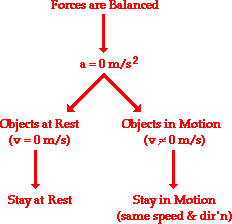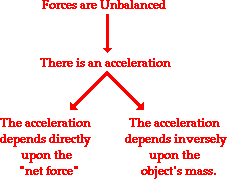Newton's second law of motion can be formally stated as follows:
When a net force acts on an object of constant mass, the object will accelerate and move in the direction of the resultant force.The product of the mass and acceleration of the object is equal to the resultant force.

Equation:
a = Fnet / m
Where,
a- acceleration
F- Force acting on object
m- mass
This equation can be rearranged to as follows:
Fnet = m * a
Fnet = m * g
(g - acceleration due to gravity)
(acceleration of free fall is due to Earth's gravity is 10(m/s)/s)
Hence,
W= m * g

The acceleration is directly proportional to the net force; the net force equals mass times acceleration; the acceleration in the same direction as the net force; an acceleration is produced by a net force. The NET FORCE. It is important to remember this distinction.
It is the net force which is related to acceleration.
*the net force is the vector sum of all the forces. If all the individual forces acting upon an object are known, then the net force can be determined.
Consistent with the above equation, a unit of force is equal to a unit of mass times a unit of acceleration. By substituting standard metric units for force, mass, and acceleration into the above equation, the following unit equivalency can be written.

No comments:
Post a Comment